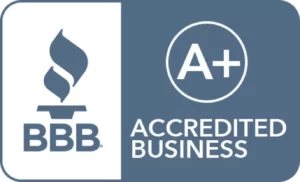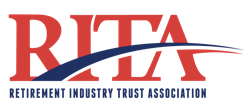Asset & Creditor Protection for Self-Directed IRA LLC is Necessary
Asset and creditor protection for a Self-Directed IRA LLC is a form of guarding your wealth. This why it’s valuable for your IRA. Retirement accounts have become several of Americans’ most valuable assets. Because of this, it’s important to protect your IRA funds from creditors, including people who have won lawsuits against you. Generally, the asset/creditor protection strategies available to you depend on the type of retirement account you have. Is your retirement account Traditional, IRA or 401(k) qualified plan? Each of these retirement accounts are subject to different Asset & Creditor Protection for Self-Directed IRA LLC strategies.
IRA Protection From Creditors by State
Are IRAs protected from creditors? The creditor protection for these plans depends on your state residency, and whether the assets are yours or if you inherited them. You will find the asset & creditor protection by state for a self-directed IRA below. You will find IRA protection for California, Florida, New York – every state. IRA Asset Protection, also known as IRA Creditor Protection or IRA Bankruptcy Protection, can help protect the assets in your IRA from lawsuits, creditors, liens lawsuits and much more. It is a type of technique that provides IRA asset protection by state. It is advised that you protect your assets prior to any claims or liabilities, as it’s often too late once a claim has occurred.
As you may know, when using a Self-Directed IRA LLC, you have the opportunity to make a wide range of traditional and non-traditional investments. However, it’s important to note that you also receive strong asset and creditor protection. So, by using an LLC that your IRA completely owns (self-directed IRA LLC), you gain another layer of limited liability protection. For example, if you use a Self-Directed IRA LLC to make investments, you have better asset and creditor protection vs making the investment yourself. Because of this, it’s a wise choice to invest and grow your retirement funds in a self-directed IRA LLC. It will protect your retirement assets from creditors, inside or outside of bankruptcy.
IRA’s Federal Protection for Bankruptcy
Similar to 401(k) qualified plans, The Bankruptcy Abuse Prevention and Consumer Protection Act of 2005 (“BAPCPA” or the “Act”), which became effective for bankruptcies that filed after October 17, 2005, gave protection to debtor’s IRA funds. This was done by exempting IRA funds from the bankruptcy estate. In other words, most unsecured business and consumer debts. An unsecured debt is essentially a loan that is not backed by an underlying asset. The general exemption provides an unlimited exemption for IRAs under section 408 and Roth IRAs under section 408A.
Effective April 1, 2022, the maximum aggregate bankruptcy exemption amount for IRAs increased from $1,362,800 to $1,512,350. This exemption amount is subject to cost-of-living adjustments (COLAs), having risen from an initial exemption limit of $1,000,000 as enacted with the Bankruptcy Abuse Prevention and Consumer Protection Act of 2005.
Protection of IRAs from Creditors Outside of Bankruptcy
In general, ERISA pension plans, such as 401(k) qualified plans, are afforded extensive anti-alienation creditor protection. This means that pension plan benefits will not go to a creditor. And if the pension plan must pay creditors, it will lose it’s good tax status. This is both inside and outside of bankruptcy. However, these extensive anti-alienation protections do not extend to an IRA. And this includes a Self-Directed IRA arrangement under Code section 408. Therefore, since an individually established and funded Traditional or Roth IRA is not an ERISA pension plan, IRAs are not preempted under ERISA. Thus, for anything short of bankruptcy, state law determines whether IRAs (including Roth IRAs) will receive protection from creditors’ claims.
It’s important to note, on June 12, 2014, the Supreme Court unanimously upheld a Seventh Circuit decision that said inherited IRAs do not enjoy the protections of IRAs in bankruptcy proceedings.
The following table will provide a summary of state protection that IRAs receive, including Self-Directed IRAs, from creditors outside of the bankruptcy context.
Asset & Creditor Protection for Self-Directed IRA
Summary of State Protection that IRAs Receive
| State | State Statute | Special Statutory Provision | State Traditional IRA Exemption from Creditors | State Roth IRA Exemption from Creditors |
| Alabama | Ala. Code §19-3B-508 | Yes | No | |
| Alaska | Alaska Stat. §09.38.017 | In fact, the exemption does not apply to amounts within 120 days before the debtor files for bankruptcy. | Yes | Yes |
| Arizona | Ariz. Rev. Stat. Ann. § 33-1126C | In fact, the exemption does not apply to amounts within 120 days before a debtor files for bankruptcy. | Yes | Yes |
| Arkansas | Ark. Code Ann. §16-66-220 | Yes | Yes | |
| California | Cal. Civ. Proc. Code § 704.115 | Yes – IRAs are exempt only to the extent necessary to provide for the support of the judgment debtor when the judgment debtor retires and for the support of the spouse and dependents of the judgment debtor, taking into account all resources that are likely to be available for the support of the judgment debtor when the judgment debtor retires. | No | |
| Colorado | Colo. Rev. Stat. §13-54-102 | Yes | Yes | |
| Connecticut | Conn. Gen. Stat. §52-321a | Yes | Yes | |
| Delaware | Del Code Ann. § 10-4915 | Yes | Yes | |
| D.C. | D.C. Code § 15-501(a)(9) & (10) | Yes | Yes | |
| Florida | Fla. Stat. Ann. §222.21 | In this case, the debtor’s IRAs are exempt from creditors, however one Florida court has held that inherited IRAs are not exempt from creditors (Robertson v. Deeb, 16 So. 3d 936 (Fla. 2d Aug. 14, 2009). | Yes | Yes |
| Georgia | Georgia Code Ann. § 44-13-100(a)(2.1) | In this case, IRAs are exempt only to the extent necessary for the support of the debtor and any dependent. | Yes | No |
| Hawaii | Hawaii Rev. Stat. § 651-124 | However, this exemption does not apply to contributions toward a plan or arrangement within three years before the date a civil action begins against the debtor. | Yes | No |
| Idaho | Idaho Code §§ 11-604A, 55-1011 | Yes | No | |
| Illinois | I.L.C.S. § 5/12-1006 | Yes | Yes | |
| Indiana | Ind. Code Ann. § 55-10-2(c)(6) | Yes | No | |
| Iowa | Iowa Code Ann. § 627.6(8)(e), (f) | Yes | Yes | |
| Kansas | Kan. Stat. Ann. § 60-2308 | Yes | Yes | |
| Kentucky | Ky. Rev. Stat. Ann. § 427.150(2)(f) | However, this exemption does not apply to any amounts contributed to an individual retirement account if the contribution occurs within 120 days before the debtor files for bankruptcy. Also the exemption does not apply to the right or interest of a person in individual retirement account to the extent that right or interest is subject to a court order for payment of maintenance or child support. | Yes | Yes |
| Louisiana | La. Rev. Stat. Ann. §§ 20:33(1), 13:3881(D) | Here. it’s important to realize no contribution to an IRA is exempt less than one calendar year from the date of filing bankruptcy. This is whether voluntary or involuntary, or the date rights of seizure are filed against the account. Also the exemption does not apply to liabilities for alimony and child support. | Yes | Yes |
| Maine | Me. Rev. Stat. Ann. Tit. 14, § 4422(13)(E) | Exempt only to the extent reasonably necessary for the support of the debtor and any dependent. | Yes | Yes |
| Maryland | Md. Code Ann. Cts. & Jud. Proc. § 11-504(h)(1) | Yes | Yes | |
| Massachusetts | Mass. Gen. L. Ch. 235 § 34A; 236 § 28 | The exemption does not apply to an order of court concerning divorce, separate maintenance or child support. Additionally, not to an order of court requiring an individual convicted of a crime to satisfy a monetary penalty or to make restitution. Furthermore, it doesn’t apply to sums deposited in a plan in excess of 7% of the total income of the individual within 5 years of the individual’s declaration of bankruptcy or entry of judgment. | Yes | Yes |
| Michigan | Mich. Comp. Laws Ann. §§ 600.5451(1), 600.6023(1)(k) | The exemption does not apply to amounts an individual contributes to a retirement account or individual retirement annuity. Of course, this is if the contribution occurs within 120 days before the debtor files for bankruptcy. Also the exemption does not apply to an order of the domestic relations court. | Yes | Yes |
| Minnesota | Minn. Rev. Stat. Ann. § 550.37(24) | Protection limited to $60,000 (adjusts for inflation). | Yes | Yes |
| Mississippi | Miss. Code Ann. § 85-3-1(e)Applies to solo 401k plans | Yes | Yes | |
| Missouri | Mo. Ann. Stat. § 513.430.1(10)(e) and (f) | Exemption limited to extent reasonably necessary for support. | Yes | Yes |
| Montana | Mont. Code Ann. §§ 19-2-1004, 25-13-608, 31-2-106 | Yes | Yes | |
| Nebraska | Neb. Rev. Stat. § 25-1563.01 | For IRAs – Bound to the extent reasonably necessary for support. Individual Retirement Accounts generally receive protection from attachment and garnishment to the extent the funds contained therein are reasonably necessary for the support of the debtor or any dependent of the debtor. Novak v. Novak, 245 Neb. 366, 513 N.W.2d 303 (1994). | Yes | Yes |
| Nevada | Nev. Rev. Stat. § 21.090(1)(q) | The exemption is limited to $500,000 in present value held in an IRA. | Yes | Yes |
| New Hampshire | N.H. Code Ann. § 511:2, XIX | Yes | Yes | |
| New Jersey | N.J. Stat. Ann. § 25:2-1(b) | Yes | Yes | |
| New Mexico | N.M. Stat. Ann. §§ 42-10-1, 42-10-2 | Yes | Yes | |
| New York | N.Y. Civ. Prac. L. and R. § 5205(c) | Yes | Yes | |
| North Carolina | N.C. Gen. Stat. § 1C-1601(a)(9) | Yes | Yes | |
| North Dakota | N.D. Cent. Code § 28-22-03.1(3) | Retirement funds that are in effect for at least one year to the extent those funds are in an account that is exempt from taxation. This is under section 401, 403, 408, 408A, 414, 457, or 501(a) of the Internal Revenue Code of 1986. So the value of those assets that are exempt may not exceed one hundred thousand dollars for any one account or two hundred thousand dollars in aggregate for all account. | Yes | Yes |
| Ohio | Ohio Rev. Code Ann. § 2329.66(A)(10)(b) and (c) | SEP and SIMPLE IRAs are not protected. | Yes | Yes |
| Oklahoma | 31 Okla. St. Ann. § 1(A)(20) | Yes | Yes | |
| Oregon | 42 Pa. C.S. §§ 8124(b)(1)(vii), (viii), (ix) | Yes | Yes | |
| Pennsylvania | 42 Pa. C.S. §§ 8124(b)(1)(vii), (viii), (ix) | 100%, except for amounts that are, first, contributed within 1 year (not including rollovers). Second, contributed in excess of $15,000 in a one-year period. Or, third, deemed fraudulent conveyances. | Yes | Yes |
| Rhode Island | R.I. Gen. Laws § 9-26-4(11), (12) | Yes | Yes | |
| South Carolina | S.C. Code Ann. § 15-41-30(12) | IRA exemption limited to the extent reasonably necessary for support. For Solo 401(k) Plans, not limited to the extent reasonable necessary for support. | Yes | Yes |
| South Dakota | S.D. Cod. Laws §§ 43-45-16 S.D. Cod. Laws §§ 43-45- 17 | Exempts “certain retirement benefits” up to $1,000,000. | Yes | Yes |
| Tennessee | Tenn. Code Ann. § 26-2-105 | Distributions 100% exempt to the extent they are on account of age, death, or length of service and debtor has no right or option to receive other than periodic payments at or after age 58. | Yes | Yes |
| Texas | Tex. Prop. Code § 42.0021 | Yes | Yes | |
| Utah | Utah Code Ann. § 78-23-5(1)(a)(xiv) | The exemption does not apply to amounts contributed or benefits accrued by or on behalf of a debtor within one year before the debtor files for bankruptcy. | Yes | Yes |
| Vermont | 12 Vt. Stat. Ann. § 2740(16) | Yes | Yes | |
| Virginia | Va. Code Ann. § 34-34 | Limited to interest in one or more plans sufficient to produce annual benefit of up to $25,000 (pursuant to actuarial table in statute). | Yes | Yes |
| Washington | Wash. Rev. Code § 6.15.020 | Yes | Yes | |
| West Virginia | W. Va. Code § 38-10-4(j)(5) | Principal 100% protected. Exemption for distributions limited to the extent reasonably necessary for support. | Yes | No |
| Wisconsin | Wisc. Stat. Ann. § 815.18(3) | Yes | Yes | |
| Wyoming | Wy. Stat. Ann § 1-20-110(a)(i), (ii). No statutory exemption for IRAs. – only mentions retirement plans | No statutory exemption for IRAs. – only mentions retirement plans | No | No |
IRA Asset Protection Planning
Notably, the different federal and state creditor protection given to 401(k) qualified plans and IRA, including Self-Directed IRAs, inside or outside the bankruptcy context presents a number of important asset protection planning opportunities.
For example, if you leave an employer who provides a qualified plan, rolling over assets from a qualified plan, like a 401(k), into an IRA may have asset protection implications. For example, if you live in or are moving to a state where IRAs have no creditor protection or have an excess of $1,512,350 million dollars in plan assets and are contemplating bankruptcy, you would likely be better off leaving the assets in the company qualified plan.
That is to say, if you plan to leave at least some of your IRA to your family, other than your spouse, your beneficiaries’ creditors may not be able to protect your assets. Of course, this depends on where the beneficiaries live. IRA assets left to a spouse are likely to receive creditor protection if you re-title the IRA in the name of the spouse. However, you will likely be able to protect your IRA assets that you plan on leaving to your family, other than your spouse, by leaving an IRA to a trust. Consequently, you must name the trust on the IRA custodian Designation of Beneficiary Form on file.
The IRA Asset & Creditor Protection Solution
In summary, by having and maintaining an IRA, you will have over $1.5 million of asset protection from creditors in a bankruptcy setting. However, the determination of whether your IRA will be protected from creditors outside of bankruptcy will largely depend on state law. As illustrated above, most states will afford IRAs full protection from creditors outside of the bankruptcy context. So, IRA Asset Protection is a crucial part of your retirement planning.
If you want more information on Asset & Creditor Protection for Self-Directed IRA LLC, let the specialists at IRA Financial Group assist you today. We’re only a call or email away.







